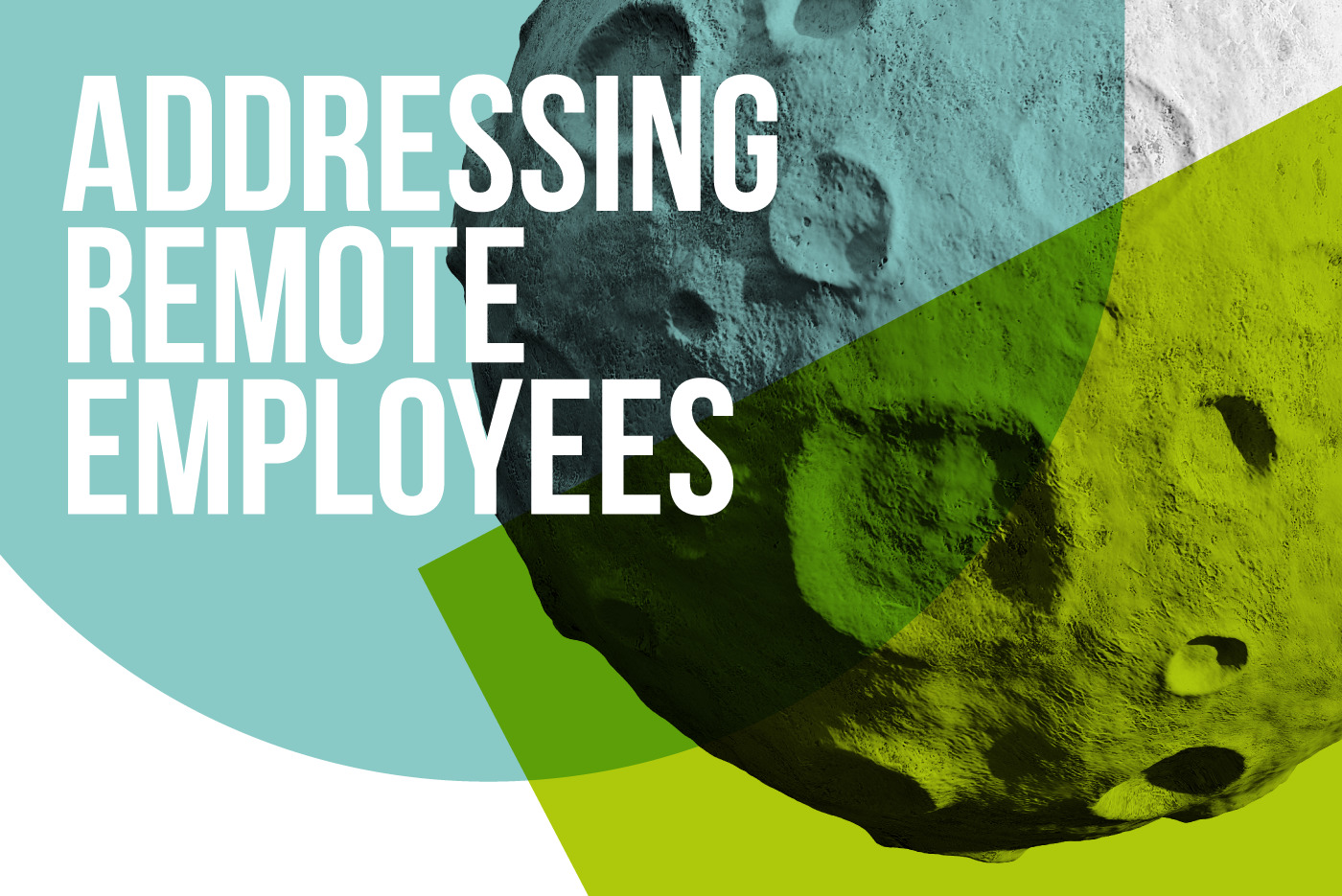
If there’s one issue many of our clients regularly approach us with, it’s that they struggle to connect with and effectively engage all their people – especially remote employees.
And it’s easy to see why. A few decades ago, remote working was pretty much non-existent. But today, advances in technology and the global expansion of organisations means it’s become a standard feature of our workplaces.
In fact, in the UK, home-working has increased by a fifth in only the last ten years. It’s now such an entrenched working practice that the new kids on the block, the Millennials and Gen Z’ers, expect it as a standard perk. And on top of that, you have all the other remote employees too – be them shift workers, on-the-road, or spread across multiple different office locations. And in the case of global organisations, even across continents.
Keeping up with the times
Engaging remote employees is cited as a primary barrier to internal comms success by 39% of internal communicators. The trouble is, we haven’t quite managed to adapt our communication or leadership practices to keep up with this shift in how the modern workforce operates.

That’s not to say we should just straight-up ban remote working for good. It comes with some good benefits – reduced turnover, greater productivity, and increased employee engagement, to name the best few.
We just need to acclimatise to it.
Having encountered this exact issue with some of our clients, we’re well-versed in creating compelling communications that connect with, engage and inspire remote employees (you can see just how we’ve been doing that here).
But isn’t it about time we came up with a comprehensive answer to this persistent problem?
‘Without an address, you might as well not exist’
We recently came across this fascinating innovation by the folks over at What3Words which we think serves as a pertinent reminder of the importance of keeping remote employees engaged.
Disillusioned with standard locational addressing systems, they divided the world into individual segments of 3 meters x 3 meters, and assigned each segment a set of three unique words. These three words effectively act as that individual location’s address.
For instance, wherever you’re reading this, your location might be: monkey.banana.scallops. Or perhaps: radiator.pirate.pilates. (In case you’re wondering, this blog was written at sober.calendars.reporting).
If you want to hear more about What3Words, here’s their inspiring TED Talk:
One of the best things about the What3Words system is that it assigns addresses to places which had previously lacked them – subsequently giving everybody a place in the world.
As economist Hernando de Soto said, ‘Without an address, you might as well not exist’.
While it’s rather a harsh statement, we feel it’s a fitting maxim for life within – and indeed outside of – our organisations.
We mustn’t fall into the trap of ‘out of sight, out of mind’. Remote employees are as much a part of the organisation as those who pull their weight in head office. And they need to be able to feel that way.
Addressing remote employees
We know it can be tough, particularly in large organisations, to keep every employee connected and engaged. There’s a paradox at work – as even though we’re more digitally connected than ever before, we’re simultaneously becoming much more physically disconnected.
More specifically, shift workers might not be able to access information at the same time as everyone else. Road-based employees (such as delivery drivers) may not have access to the internet or a mobile network. And hourly workers might literally lose money for their company if they stop to ‘receive’ communication during their shift.
But worse still – the issue most often cited by remote employees is that they start to feel disconnected and isolated from their colleagues, the company, and its culture. And ultimately, they end up feeling less respected within the organisation.
So, how can we possibly keep all these remote employees truly connected?
Just like What3Words – we need to address our organisations, and their employees.
We need to ensure every employee has their own identity. That they have a strong sense of purpose, and know how they’re contributing to the success of their organisation. And they need to be recognised and contactable, so they don’t feel out of the loop. There needs to be a concrete, inclusive method of communicating so everyone can join in the conversation – wherever and whenever they want.

Employees on the pull
In this vein, there has been an increasing – albeit slow – shift towards ‘pull’ communications in the workplace. Enabling employees to digitally access and contribute to company information at their discretion means it’s more likely information won’t go ignored, and that comms can be fitted around hectic schedules. It gives them more autonomy too – one of the key cornerstones of employee engagement.
In our experience, creating a company intranet and/or ESN (Enterprise Social Network) is a great way to achieve this.
Important information can be privately uploaded. Comms can be hosted whenever they’re necessary. No-one would miss a post thanks to timely notifications. The company culture can be reflected in its online identity. Every employee can come together to interact and talk about company issues, give personal feedback, or get any niggling queries off their chests. And what’s more – anyone, anywhere, has free access!
Vulnerable leaders can rest assured that their employees generally have their backs.
The best thing is, this solves the ‘addressing’ problem as well. Particularly on social media, employees would have their own personal work account, distinguished from their personal profiles – which would help them feel like a part of the organisation wherever they were in the world.

Taking our comms into the 21st Century
Of course, there are issues. Adoption of ESNs has been more stagnant than expected. And as we mentioned earlier, some remote employees might not always be able to access the information (although when you think about it, this is exactly the same with non-remote employees – after all, if everyone was constantly glued to their phones waiting for new communications, no-one would ever get anything done).
But perhaps the most unsettling issue is that almost half of IC professionals say the digital tech within their organisations isn’t fit for purpose. But that just means we need to work harder to convince senior leaders to commit to making it work.
We’ve helped some of our clients to implement bespoke intranets and ESN communications, so we know when it’s done right it pays off – especially where remote employees are concerned.
And social networking and online activity will only continue to grow outside the workplace. Likewise, 77% of internal comms professionals say they’re planning to increase internal use of social platforms (more than any other comms channel). And additions to the ESN line-up are popping up all the time – with new products like Workplace by Facebook and Slack alongside the old chestnuts like Yammer and Jive.
So don’t you think it’s time our organisations took full advantage of the capabilities that the 21st Century digital era affords us? Focusing resolutely on bringing everyone – no matter how remote – together to communicate, converse, and connect in unison.
Get in touch today to find out how we could help you transform your leaders and managers from average, to exceptional!
Got a brilliant idea you simply can’t keep to yourself?
We’re always looking for fresh faces to help us further the IC conversation by writing guest articles for our blog. If you want to make your voice heard on internal comms, employee engagement, change management or leadership development, we’d love it if you got in touch!












